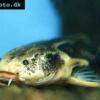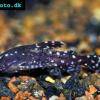Striped raphael catfish - Platydoras costatus
Scientific name: Platydoras costatus
Common name: Striped raphael catfish
Family: Doradidae
Usual size in fish tanks: 15 - 24 cm (5.91 - 9.45 inch)
014
Recommended pH range: 5.8 - 7.5
Recommended water hardness: 4 - 18°N (71.43 - 321.43ppm)
0°C 32°F30°C 86°F
Recommended temperature range: 24 - 30 °C (75.2 - 86°F)
The way how these fish reproduce: Spawning
Where the species comes from: South America
Temperament to its own species: peaceful
Temperament toward other fish species: peaceful
Usual place in the tank: Bottom levels
Origin
The Striped Raphael Catfish originally lived in the Amazon and other South American waters. Over time, they have also been introduced to some U.S. states that border South America.
General Information and Care
The Raphael Catfish is one of the larger catfish species you can keep in an aquarium. Keep in mind that when they reach their full size of around 7 inches (18 cm), they'll need a spacious tank to move around comfortably.
They may take a few days to settle in, but once they do, they become very active. Their confidence comes partly from the many spines they have, which act as a defense against predators.
They're also known as "talking catfish" because they can make a croaking sound when they feel threatened, another defensive tactic.
Like most catfish, they are nocturnal, so be sure to add hiding spots in the tank where they can rest during the day.
Even though they can be a confident species, it's best to avoid keeping them with aggressive tankmates. They thrive with peaceful companions, and following this guideline will help them stay active and happy in your aquarium.
Food and Feeding
Striped Raphael Catfish thrive on a diet of sinking pellets, bloodworms, and brine shrimp. It's best to feed them after the lights go out in the evening.
Sexing
There are no known differences between males and females.
Breeding
So far, there are no recorded instances of Platydoras costatus breeding in captivity.
Lifespan
With proper care, Platydoras costatus can live up to 13 years.
Short Description
Striped Raphael Catfish are nocturnal, but once they settle in, they may explore during the day. They like to burrow, so it's best to use fine gravel or sand as the substrate. Never try to catch them with a net, as their side spines can get tangled. Instead, use a glass jar to move them.
Pictures
Thanks to Sue Lamb, vanila 75, and Ala!






 Spiny
Spiny  Thorny
Thorny  Raphael
Raphael  Marbled
Marbled